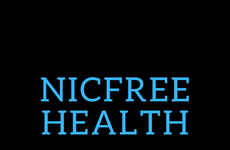
This Chart Explores the Effect of Nicotine on Your Body
Jonathon Brown — January 25, 2013 — Lifestyle
References: visual.ly
Most people who smoke cigarettes know they contain all kinds of chemicals, but what exactly is the effect of nicotine specifically on your body?
This infographic gets scientific and breaks down the many factors affected by the most prevalent chemical in cigarettes. While this may not make smokers feel any different during their next puff, it can help make them more aware of what’s happening in their bodies.
There’s 1-2 mg of nicotine in each cigarette according to this infographic. 25% of students smoke in high school and 80% of those people will smoke into adulthood. This shows that starting the habit early makes it highly likely it will continue into your later years. 21.4% of smokers are actually between the ages of 18 and 24 years old.
This infographic gets scientific and breaks down the many factors affected by the most prevalent chemical in cigarettes. While this may not make smokers feel any different during their next puff, it can help make them more aware of what’s happening in their bodies.
There’s 1-2 mg of nicotine in each cigarette according to this infographic. 25% of students smoke in high school and 80% of those people will smoke into adulthood. This shows that starting the habit early makes it highly likely it will continue into your later years. 21.4% of smokers are actually between the ages of 18 and 24 years old.
Trend Themes
1. Anti-smoking Campaigns - Developing effective campaigns to educate younger generations on the negative effects of nicotine consumption and combat the high number of young smokers.
2. Nicotine Alternative Products - Exploring and investing in the development of alternative products to help current smokers quit and reduce nicotine addiction.
3. Nicotine-free Workplace Initiatives - Introducing anti-smoking initiatives in the workplace as a way to promote healthier workplace habits and decrease nicotine addiction among employees.
Industry Implications
1. Healthcare - Investing in technological advancements and innovation to find effective treatments to nicotine addiction and its associated health risks.
2. Tobacco Industry - Investing in research and development of low-risk alternative products to replace traditional tobacco products that contain nicotine.
3. Marketing and Advertising - Developing innovative and effective anti-smoking campaigns and initiatives that target young adults and raise awareness of nicotine addiction's negative consequences.
1.6
Score
Popularity
Activity
Freshness























